Numology (I)
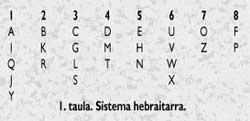
With this excuse, we have prepared a series of articles on a hidden science. To name this science we have chosen the generic name, that is, numerology (numbering?, number? ), but inside it houses different arts. On the other hand, the aim of these articles is not to explore the depth of this science, but to give an explanation and an example of what science can bring. Stakeholders should therefore contact sources and experts.
Delving into history
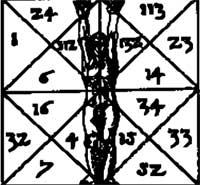
As a way of looking at the future, it cannot be said when numerology arose. In fact, Kaldea, Egypt, Assyria, Babylon, Greece or India created and used their own numerologies. The Hebrans invented a magic-philosophical system called Kabbalistic Gematria based on 22 letters of the alphabet. In this system they related the 22 letters to numbers between 1 and 8, which expressed the hidden meaning of the Writings, the nature of a person or the future itself. The Pythagoreans, for their part, considered that with the numbers everything could be expressed and, thus, based on the characteristics of each number, constituted a complete system to clarify the meaning of everything. He soon took advantage of the alphabetical and numerical adaptation of the Hebraicos and the method of the Pythagoreans for his studies. Later the effects of Judaism and Christianity would occur.
In the Renaissance the philosopher and magician Heinrich Cornelius Agrippa (1486-1555) published the theory that gave meanings to the numbers from 1 to 9. The starting point of the theory was the postulate of the Pythagoreans and calculated complex relationships between human proportions and harmony and the numbers to which they fit.
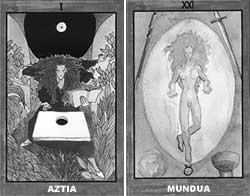
XVIII. At the end of the 20th century the theories of Giuseppe Balsamo Cagliostro (1743-1795), magician, curator and spiritualist appeared. He based his research on adapting the letter number of the Strands and on the theories of Agrippa and Pythagoreans and apparently made precise predictions through numerology. It is said that he won a great fortune in Paris and it is said that with the faith of Strasbourg he made about 15,000 compositions.
Although the Alphonse Louis Constant, Eliphus Levi, the cabalist and the great scholar are mentioned alongside the previous ones, we cannot consider him numerary. However, the relationship between the 22 main arcana of the tarot, the 22 letters of the Hebrew alphabet and the 22 journeys of the tree of life is due to him. The Golden Dawn Order, inspired by Rosicrucian, was responsible for spreading the theories of Levi between 1890 and 1900. Based on them, colors, stones, plants or aromas were precisely classified. In addition, its members classified gods and goddesses of many mythical religions and beliefs, such as those of Greek, Roman, Egyptian, Christian or Jewish culture.
XX. When talking about the diffusion of 20th century numerology, Aleister Crowley (1875-1947) should be mentioned for his indirect influence. Aleister left in the letters of the tarot his contribution to magical thinking and from there he benefited numerology. To finish this list, we must mention Count Louis Hamon (1866-1936), known as Cheiro. Igarlea, one of the greatest exponents of palmistry, was an astrologer and brilliant numerist and among his clients were Sarah Bernhardt, Mark Twain or Sir Austen Chamberlein.
However, we will leave the list incomplete. Among them came a multitude of hidden groups, sorcerers, etc., complaining about the meaning of numbers.
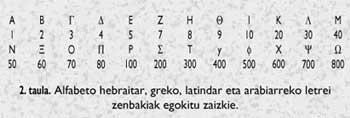
Sections
For the numerists, our day of birth and the concrete hour mark us for life. In addition, they indicate that with the name or, more specifically, with the corresponding number, you can analyze your own ability or limitations. In this way, in addition to our limitations, this study also realizes our potentiality and numerology allows us to work if we are well prepared for everything we can do throughout life or what the future holds for us.
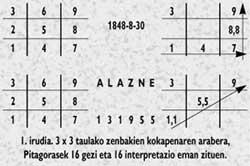
The question immediately occurs to us: how should the analysis of numbers be done? The reader will have to forgive, but there is not a single answer. In fact, numerology can be put into practice in many ways and it must be noted that different methods will produce different common results.
At the base of the gematri we find that each word is associated with an individual number, thus deciphering the information implicit in the numbers. Thus, the numerical value of the words is obtained by adding the numbers of the letters that form the same word. Since there is a relationship between words with the same numerical values, words, phrases and names can be associated with others of the same value and the hidden value of names can be found by applying Gematria. The letters of the Hebrew, Greek, Latin and Arabic alphabet have been numbered (Table 2).
There are more methods to reach the same consequences. One of them is based on the date of birth and after writing the date by numbers, it is added and summarized in a number between 1 and 9. Although the method is the same, numerists usually use different names to designate the number of the date of birth, such as the destination number, the birth number, the path, etc. The birth chart can also be completed with the date of birth. According to the location of the numbers in table 3 x 3, Pythagoras gave 16 arrows (3 rows, 3 columns, 2 diagonals) and 16 interpretations (see figure 1). You can also build the pyramid of maturity from the same data. In it will appear the four peaks of personal development and each summit will be accompanied by the corresponding numbers, years and ages. All these numbers will give us the feature of the top.

As can be seen, applications related to the date of birth are commonly used in numerology. However, it is not the only way and, for example, the system based on first and last names is quite known. By adapting a number to the letters of the current alphabet, we can calculate the number corresponding to the name and surname (Table 3). As for its meaning, denominated vowels are called “moods number” or “hidden number”, meaning internal identity.
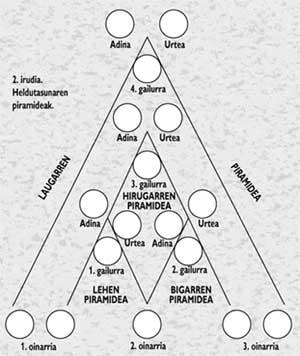
The number of consonants will give us an external image or an external identity. The total number of the denomination is obtained by adding the previous two. It is called “destination number” or “life mission number.” This issue will reveal the path we have to follow in order to successfully meet our goals. In addition, the table of names can be completed: the numbers corresponding to the letters of the name will be placed in the table 3x3 and with the same system that has been used in the birth table, that is, through the system of Pythagoras arrows, this data will be analyzed. Obviously, the comparison between the table of names and the table of birth will allow a more complete analysis.
Aritomancy is an ancient diversion of numerology. It is not used for the analysis of people's identity, but has been widely used to make inventions. The letter of Pythagoras is based on numerical adaptation, but unlike other previous methods, in the arithomania is calculated without abbreviating the name. When the number obtained exceeds 1390 the figure on the left will be subtracted (1625 B 625). The result obtained with the name will then be numbered in a numerical table.
Kabala means popularity or tradition. According to this theory, to reach God it is necessary to work the recognition based on wisdom. For the cabalists, in all things there is a part of God. In fact, from the closed borders of God came a single ray of light from which nine more lights emerged. According to the book of clarity, that is the origin of Creation. These ten lights are the so-called “sefirot”, that is, the numbers (Table 4). The numbers are joined in twenty-two ways, one for each letter of the Hebrew alphabet. The cabalists interpret the sefirots placed in three columns (figure 3). Law refers to inferiority and encompasses the general principles of the universe: intelligence, positive and light. The one on the left shows a fondness for rigor, slowness and darkness. The medium is the value of balance and tries to reconcile others.
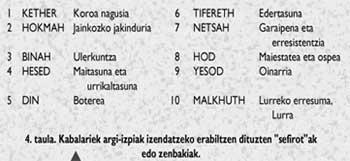
The tarot has 78 cards, 22 main arcanes and 56 small arcanes. Each letter is associated with a number that gives it a fixed, positive or negative meaning. This number 78 is not given at random and results from the calculation detailed below: from 1 to 9, cycle of studies; from 10 to 11, for the personal development and implementation of the experience gained in the previous cycle; months of 12 years. Adding all you get the full cycle: 1+2+3+4+5+6+7+8+9+ +10+11+12=78. In the tree of life of the tarot you can see the twenty-two ways that unite sefirotas and the relationship between the main arcanes.
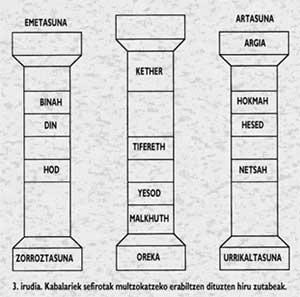
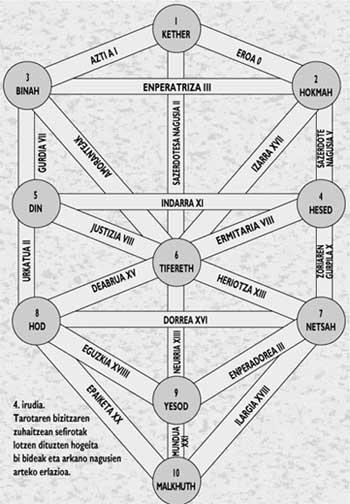
Buletina
Bidali zure helbide elektronikoa eta jaso asteroko buletina zure sarrera-ontzian











